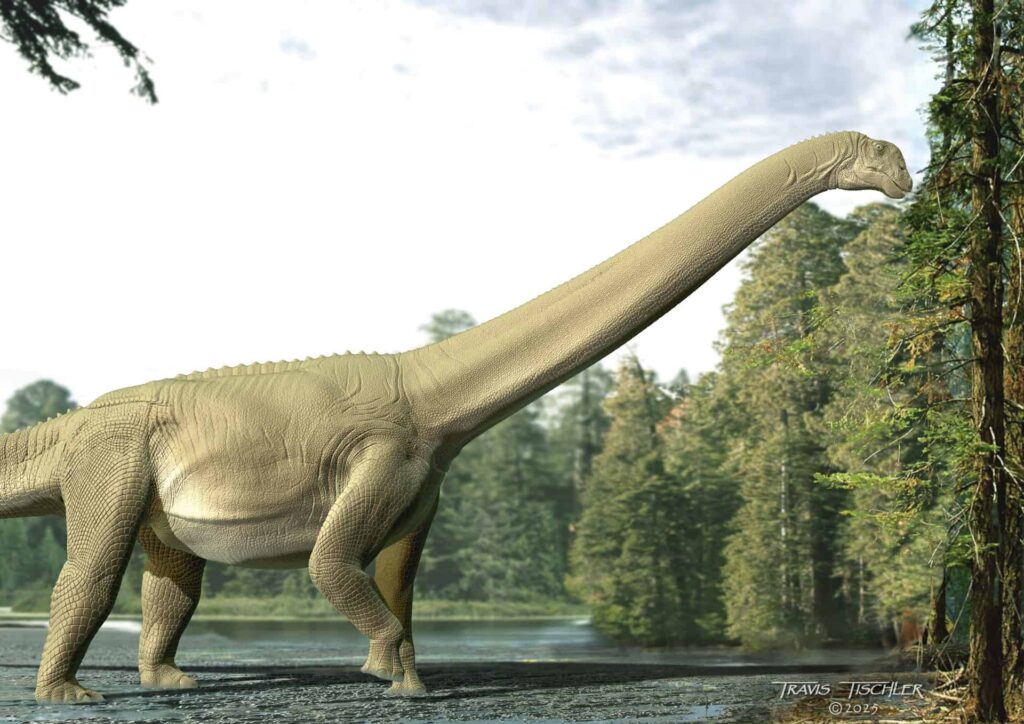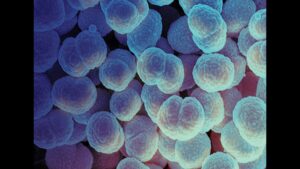
QUEENSLAND, AUSTRALIA – In a groundbreaking discovery, paleontologists have unearthed a sauropod dinosaur in outback Queensland, revealing its last meal preserved for 95 million years. This exceptional find provides unprecedented insights into the dietary habits of these colossal creatures.
Breaking: Discovery of Judy’s Last Meal
Since the late 19th century, sauropod dinosaurs such as the Brontosaurus and Brachiosaurus have been considered herbivores. However, until now, direct evidence in the form of fossilized gut contents had been elusive. The discovery of “Judy,” an exceptionally preserved sauropod, changes this narrative.
Published in Current Biology, the study describes Judy as the most complete sauropod ever found in Australia, with fossilized skin and gut contents intact. This discovery sheds light on the feeding habits of the largest land animals of all time.
Immediate Impact: Insights into Sauropod Diet
Sauropods, known for their long necks and massive size, dominated Earth’s landscapes for 130 million years during the Jurassic and Cretaceous periods. The hypothesis that they were herbivores has rarely been contested, given their simple teeth and slow pace.
Sauropods needed a reliable food source to sustain their huge bodies, making plants the obvious choice.
Judy’s discovery in Queensland, facilitated by the Australian Age of Dinosaurs Museum, provides a rare glimpse into the diet of these ancient giants. Her gut contents reveal a mix of conifer bracts, seed fern seed pods, and angiosperm leaves.
Key Details Emerge: Judy’s Dietary Evidence
Analysis of Judy’s remains, including her gut contents, was conducted using advanced imaging techniques at facilities across Australia. This allowed researchers to visualize the preserved plants without damaging them.
The findings confirm that sauropods consumed a variety of plant matter, relying on gut flora for digestion. Judy’s diet included:
- Conifer bracts, suggesting high-level feeding
- Seed pods from extinct seed ferns
- Leaves from flowering plants, indicating lower-level feeding
Judy’s gut contents confirm that sauropods ate their greens but barely chewed them – their gut flora did most of the digestive work.
Expert Analysis: Implications for Sauropod Growth
According to Stephen Poropat, a research associate at Curtin University and co-author of the study, Judy was not fully grown when she died. The presence of both high-level and low-level plant material in her gut suggests that sauropod diets may have evolved as they matured.
Poropat notes, “The conifer bracts in Judy’s belly support high-level feeding, but the presence of angiosperms implies she also fed closer to the ground. This indicates a potential dietary shift as sauropods grew.”
Background Context: Sauropod Discoveries in Australia
Sauropod discoveries in Queensland have become more frequent, largely due to efforts by the Australian Age of Dinosaurs Museum. Judy, unearthed in 2017, stands out not only for her completeness but also for the preserved state of her skin and gut contents.
The museum’s work has been instrumental in piecing together the dietary habits of these ancient giants, providing valuable context for understanding their ecological role.
What Comes Next: Future Research Directions
Judy’s remains, including her skin and gut contents, are now on display at the Australian Age of Dinosaurs Museum in Winton. This discovery opens new avenues for research into sauropod biology and ecology.
Future studies will focus on comparing Judy’s gut contents with those of other sauropods to better understand dietary variations across different species and life stages. Researchers also aim to explore the broader implications of these findings on our understanding of prehistoric ecosystems.
As Poropat reflects on the exhibition of Judy’s last meal, he acknowledges the importance of such discoveries in advancing scientific knowledge, stating, “If it helped the cause of science, I think I’d be OK with it.”
This article is republished from The Conversation under a Creative Commons license. Read the original article.







